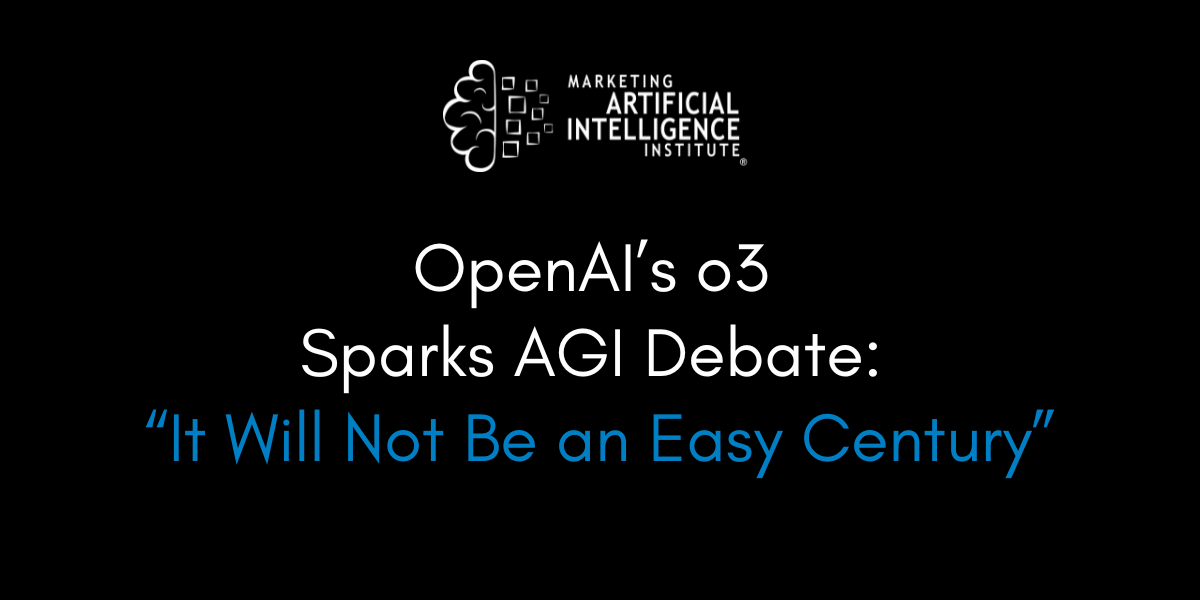Cutscenes | Caroline Poggi and Jonathan Vinel Turn the World into a Game
Cutscenes explores—and blurs—the intersection of cinema and video games.Eat the Night (Caroline Poggi and Jonathan Vinel, 2024).The world outside is a gamespace that appears as an imperfect form of the game. —McKenzie Wark, “To the Vector the Spoils,” Cabinet, no. 23 (Fall 2006) In the work of French filmmaking duo Caroline Poggi and Jonathan Vinel, there is no clear divide between online and offline spaces, virtual and real life, physical body and digital avatar. Instead, as Alenda Y. Chang writes in an essay on their career to date, “a strange but also redemptive continuity between the virtual and the real” can be found.1 Born in 1990 and 1988 respectively, Poggi and Vinel are of a generation that came of age online; computers, video games, and digital technologies are central to their understanding of what constitutes culture and where it can be located. It is no surprise, then, that their ever-expanding catalog of work—which spans films of all lengths, created initially for cinemas but increasingly for galleries—should continually, comfortably return to explorations of the digital present. Beginning with their earliest forays into filmmaking—like Vinel’s Our Love Is Powerful Enough (2014), a wartime parable made to resemble a ’90s shooter game—video games have remained integral to Poggi and Vinel’s work, providing explorative spaces where they can stretch their ideas beyond the limits of physical possibility. A perceptible authenticity runs through their films like an undercurrent: a serious gamer can recognize the sensibility of another. They use game footage in their essayistic montages, script characters who are gamers, and even create bespoke game engines to set stories within. Their process of creation is akin to playing with digital clay, moldable into anything that can be imagined. As a result, the game spaces they depict are rarely flat or blocky, but instead living, breathing digital biomes, as vivid and varied as the real worlds they portray, and often more so. Martin Cries (Caroline Poggi and Jonathan Vinel, 2017).Compared to the duo’s more sophisticated later work, Martin Cries (2017) is relatively straightforward, but it’s a good introduction to their use of game worlds. Almost all of the sixteen-minute film was created within Grand Theft Auto V (2015), whose in-game “Rockstar Editor” allows for footage to be easily captured and edited. The character models are used as actors, the environments as sets. Preset camera-angles can be selected; even the depth-of-field can be adjusted. We open on a young male avatar in his bedroom, pacing testily before repeatedly punching and kicking an office chair. “Imagine you wake up one day and all your friends have disappeared,” states a female-voiced narrator, and the man steps out into the game’s exterior world. He is dwarfed by the fictional San Andreas’s geography, persecuted by its police force, and frustrated by its lacunae, experiencing simultaneously a sense of the virtual landscape’s expansiveness and its ennui, since his friends are not there to share it with him. “Sadness has blanketed the world,” he announces. “Cookies are bland, Coca-Cola is flat…. Dogs scorn affection.” Artists have been making films using video games for as long as it has been possible to do so. Miltos Manetas used the flight simulator F/A-18 Hornet (1993) for his pioneering game-based installation MIRACLE; Peggy Ahwesh set her 2001 film She Puppet inside Tomb Raider (1996); Phil Solomon has conducted various experiments within Grand Theft Auto: San Andreas (2004) since 2005. The Grand Theft Auto franchise (1997–), has become one of the most recognizable virtual environments of all time, utilized by artists and filmmakers for everything from remaking Andy Warhol’s Empire (1965) to staging a production of Shakespeare’s Hamlet. As a form of machinima—a portmanteau of “machine” and “cinema” referring to the use of games to create animated films—Martin Cries immediately evinces the medium’s potential. The film makes profound use of the game’s varying sunrises and sunsets and frames the small figure of its protagonist against vast vistas, whether mountains or skylines. Using the game’s library of playable scenarios, Poggi and Vinel construct moments of grandeur that rival the most majestic landscapes captured by traditional cinematography. Although the tone of Grand Theft Auto is brash, satirical, and ugly, the film recontextualizes its imagery as beautiful, emotional, and sincere, augmented by the duo’s signature use of impactful soundtrack cues (in Martin Cries, a particularly deft drop of Lil Yachty's “Life Goes On” proves very touching). Here, as with all of the films by Poggi and Vinel, is a demonstration of what Steven Shaviro describes as the capacity of moving images to be “machines for generating affect.”2 Sound and image are combined for an emotional impact that is visceral and uncritical, felt in the body more than it is understood by the mind. “My name is Martin, a

Cutscenes explores—and blurs—the intersection of cinema and video games.

Eat the Night (Caroline Poggi and Jonathan Vinel, 2024).
The world outside is a gamespace that appears as an imperfect form of the game.
—McKenzie Wark, “To the Vector the Spoils,” Cabinet, no. 23 (Fall 2006)
In the work of French filmmaking duo Caroline Poggi and Jonathan Vinel, there is no clear divide between online and offline spaces, virtual and real life, physical body and digital avatar. Instead, as Alenda Y. Chang writes in an essay on their career to date, “a strange but also redemptive continuity between the virtual and the real” can be found.1 Born in 1990 and 1988 respectively, Poggi and Vinel are of a generation that came of age online; computers, video games, and digital technologies are central to their understanding of what constitutes culture and where it can be located. It is no surprise, then, that their ever-expanding catalog of work—which spans films of all lengths, created initially for cinemas but increasingly for galleries—should continually, comfortably return to explorations of the digital present.
Beginning with their earliest forays into filmmaking—like Vinel’s Our Love Is Powerful Enough (2014), a wartime parable made to resemble a ’90s shooter game—video games have remained integral to Poggi and Vinel’s work, providing explorative spaces where they can stretch their ideas beyond the limits of physical possibility. A perceptible authenticity runs through their films like an undercurrent: a serious gamer can recognize the sensibility of another. They use game footage in their essayistic montages, script characters who are gamers, and even create bespoke game engines to set stories within. Their process of creation is akin to playing with digital clay, moldable into anything that can be imagined. As a result, the game spaces they depict are rarely flat or blocky, but instead living, breathing digital biomes, as vivid and varied as the real worlds they portray, and often more so.

Martin Cries (Caroline Poggi and Jonathan Vinel, 2017).
Compared to the duo’s more sophisticated later work, Martin Cries (2017) is relatively straightforward, but it’s a good introduction to their use of game worlds. Almost all of the sixteen-minute film was created within Grand Theft Auto V (2015), whose in-game “Rockstar Editor” allows for footage to be easily captured and edited. The character models are used as actors, the environments as sets. Preset camera-angles can be selected; even the depth-of-field can be adjusted. We open on a young male avatar in his bedroom, pacing testily before repeatedly punching and kicking an office chair. “Imagine you wake up one day and all your friends have disappeared,” states a female-voiced narrator, and the man steps out into the game’s exterior world. He is dwarfed by the fictional San Andreas’s geography, persecuted by its police force, and frustrated by its lacunae, experiencing simultaneously a sense of the virtual landscape’s expansiveness and its ennui, since his friends are not there to share it with him. “Sadness has blanketed the world,” he announces. “Cookies are bland, Coca-Cola is flat…. Dogs scorn affection.”
Artists have been making films using video games for as long as it has been possible to do so. Miltos Manetas used the flight simulator F/A-18 Hornet (1993) for his pioneering game-based installation MIRACLE; Peggy Ahwesh set her 2001 film She Puppet inside Tomb Raider (1996); Phil Solomon has conducted various experiments within Grand Theft Auto: San Andreas (2004) since 2005. The Grand Theft Auto franchise (1997–), has become one of the most recognizable virtual environments of all time, utilized by artists and filmmakers for everything from remaking Andy Warhol’s Empire (1965) to staging a production of Shakespeare’s Hamlet. As a form of machinima—a portmanteau of “machine” and “cinema” referring to the use of games to create animated films—Martin Cries immediately evinces the medium’s potential. The film makes profound use of the game’s varying sunrises and sunsets and frames the small figure of its protagonist against vast vistas, whether mountains or skylines. Using the game’s library of playable scenarios, Poggi and Vinel construct moments of grandeur that rival the most majestic landscapes captured by traditional cinematography. Although the tone of Grand Theft Auto is brash, satirical, and ugly, the film recontextualizes its imagery as beautiful, emotional, and sincere, augmented by the duo’s signature use of impactful soundtrack cues (in Martin Cries, a particularly deft drop of Lil Yachty's “Life Goes On” proves very touching).
Here, as with all of the films by Poggi and Vinel, is a demonstration of what Steven Shaviro describes as the capacity of moving images to be “machines for generating affect.”2 Sound and image are combined for an emotional impact that is visceral and uncritical, felt in the body more than it is understood by the mind. “My name is Martin, and for one month I have been crying,” says Martin in voiceover, contributing to the film’s decidedly adolescent, heart-on-its-sleeve tenor. Martin’s deeply human alienation is contrasted with the artifice of the game, a simulacrum of endless blue skies and beautiful sunsets that seems to taunt him with its uncanny verisimilitude. His is a world populated by non-playable characters, all of whom go about their pattern-generated business dispassionately and automatically—not only do they not care about Martin’s predicament, they often don’t even notice him. The game space, full of possibilities as a toolset for Poggi and Vinel, becomes a prison for Martin, their proxy. The overwhelming sensation is of anhedonia: trying to scream, we find that nothing comes out, and that there is no one around to hear it anyway.

Jessica Forever (Caroline Poggi and Jonathan Vinel, 2018).
Save for one scene in which two characters boot up a racing title as a pretext to have a conversation, Poggi and Vinel’s first feature film, Jessica Forever (2018), does not rely on video games, and yet the film’s violent world and surreal story seem to operate according to the logics of gaming. Unlike other works by the duo in which game space and the real world blend and blur, the environment of Jessica Forever is not malleable: the film is set in real life, rather than a virtual fantasy.
The film’s narrative is more shell than story: a setup from which to explore various gaming-adjacent themes, notably male violence and the results of a suspended adolescence. Jessica is the protector of a group of “orphans,” youths who have been deemed unreformable by society due to their violent tendencies. These boys and young men live together in a commune, gathered as loving brothers under the maternal overlord they unquestioningly adore—training, fighting, and playing together, shedding their individual identities and doing everything as a symbiotic entity. (“All warriors nap together,” one boy says with a straight face, displaying Poggi and Vinel’s propensity for skirting the thin line between irony and sincerity.) Whenever things start to calm down, the authorities dispatch self-piloting mini-helicopter-like drones, to descend on their base, shooting mercilessly. Tension builds as the story alternates between bursts of brutality and spells of banality.
Video games are sometimes seen as an outlet, a means for releasing aggression. Here, they are also a shared aesthetic reference point, detectable in how the characters dress, the weapons they wield, and the ways they move and battle. One of the teens in the film is called Raiden, a reference to the character from Metal Gear Solid 2: Sons of Liberty (2001) who, like the boy in Jessica Forever, wields a ridiculously large katana. Like game characters forever stuck in a juvenile form, the orphans live in a state of arrested development. When two boys leave the safe space of the compound to attend a house party nearby, the innocence of a tentative flirtation with a local girl descends into violence when her friend looks at one of the orphans the wrong way, causing him to explode with senseless anger, quelled only by his brother’s calming hand. This meltdown may arise out of homoerotic jealousy, activated trauma, or fear of the other, but its expression is decidedly inarticulate, a sign that these boys aren’t yet ready for real life outside of the controlled environment Jessica has created for them. Dooming themselves and everyone around them by their inability to express their emotions using any language other than bullets and fists, the boys continually choose the short-term allure of violence over the harder, life-saving work of love and self-understanding.
Jessica, meanwhile, is relentless in her tenderness, and her central values of vulnerability and community prove transformative to these outcasts, whom the state considers irredeemable. The film’s best scene evokes the cultural aesthetics of gaming in the aughts, when even some kid-friendly franchises assumed dark colors and violent themes, and masculine bravado and nu-metal edginess reigned over everything. One boy sits between two monolithic tower speakers and cues up Jesu’s brooding metal epic “The Great Leveller” as a tribute to a recently murdered orphan. “Who put this on?” asks another boy, bobbing his head in waves of appreciation. “It’s so beautiful,” says his friend. “Cuts right through me.” As the track builds symphonically, several boys sway together, entering a quasi-spiritual trance. Another boy hardcore dances through the kitchen in slow motion, eyes closed as he windmills his arms while holding a milk carton aloft. All of the film’s themes coalesce nonverbally as these toy soldiers all gather to mosh together in the garden, collectively surrendering to the warm embrace of sonic crescendo. Though the brutish nature of the music still suggests the potential for violence, here it's channeled into a different expressive form: a dance that serves as both a bonding exercise and an impromptu funeral. There is no better vision of the beautiful brutality of brotherhood than this—softness and hardness balanced on a knife edge, the boys bonding wordlessly through a shared appreciation of a reverberating rhythm and what it suggests about remembrance, telepathically communicated and felt in a collective body moving in unison.

Best Secret Place (Caroline Poggi and Jonathan Vinel, 2023).
An hourlong film that is one of the pair’s most imaginative works, Best Secret Place (2023) takes its name from the idea of the “secret developer place,” a deliberately hidden area that acts as a storage vault for a game’s developers. Accessible either through the inputting of cheat codes or by taking specific, nonintuitive in-game actions, these closed-off spaces house character models, or game materials such as weapons or tools. Such a space is uncannily visualized by the film as a black room filled with a battalion of non-playable characters arranged in stormtrooper-like rows. Neither dead nor living, the monsters stand with glazed expressions, repetitively twitching, waiting to be called into the action of the ongoing game beyond the semi-porous walls of the secret place.
The unseen narrator of Best Secret Place introduces the concept of the secret developer place early on, sharing examples from The Elder Scrolls V: Skyrim (2011) and Fallout 4 (2015), before briefly analyzing the “final secret place” in Doom II (1994), which remained undiscovered until 24 years after the game’s initial release. To reach it—as the narrator explains alongside illustrative in-game footage—the player must “do the opposite of what shoot ’em ups require” and decline to kill one of the game’s monsters but instead follow it patiently into the room. This discovery introduces a Matrix red pill–esque provocation. When a player stumbles upon these hidden zones, it is as if they are uncovering another layer of a Russian nesting doll of virtuality in the form of this liminal, meta area. In the case of Doom II, this discovery comes from a subversion of the game’s intended actions, suggesting that to fully beat any game the player has to break it, finding another world beneath the surface as reward for their persistence. Only those who think to question a game’s rules will see all that it has to offer: the secret world beyond the virtual world beyond the real world. Best Secret Place explores this liminality in the real world through the idea of a real secret place that the film’s characters repeatedly slip into. One character falls asleep in her bedroom the night before a job interview and wakes up in this secret place. Another dives off a bridge, teleporting to the secret place the moment before he would have hit the river.3
Visualized as a multistory building site mapped like a video game level, this secret place acts as a limbo between various states: between the material and the digital, between life and death, between destruction and construction, and between dreaming and being awake. It is a place for self-discovery, play, art-creation, and friendship, and also a place seemingly without pain or death, or any clearly identifiable logical rules. One character paints a vibrant illustrated tableau that seems to depict her childlike subconscious; another films a hip-hop music video in which bullets shoot out of his hands when he fires finger guns in the air. They all test ideas without fearing any consequences, like game players who fearlessly hurl their avatars over vast chasms in platforming games, knowing that if they don’t make the jump they will be returned to a save point. And they talk to each other therapeutically about their dreams and desires, planning a new world devoid of the problems they face in the extant one.
At the end of the film, the characters gather for a send-off to the “Best Secret Place,” the suggestion being that they need to leave the building site so that the developers can begin construction.4 Their concert-like communion is at once celebratory and mournful, reminiscent of the funereal way that gamers come together when massively multiplayer online games are taken offline, gathering their avatars in the game to experience the shutdown of the server together (a phenomenon that Poggi and Vinel would revisit in their next feature). “We are at home in the night,” says the narrator at one point about this micro-community of like-minded outsiders. This secret place offered a safe space for the exploration of artistic impulses, for questions around existence and identity, and for conversations that couldn’t have happened elsewhere—but only a transient one. “A choir, an online game, it’s all very well,” the narrator explains. “When it’s over, it’s always the same. Everyone goes home.” However real the virtual can sometimes feel, it is never quite reality; it is an ephemeral hall of mirrors—a secret place within a secret place within a secret place.

Eat the Night (Caroline Poggi and Jonathan Vinel, 2024).
With Jessica Forever, Poggi and Vinel’s aim was to “turn the world into a game.”5 Conversely, their second feature film, Eat the Night (2024), seeks to “tell the story of the game’s extension into the world.” Historically, gaming was about escaping the pressures of the real world, but with the advent of online games and the metaverse “the real world is now the continuity of the player’s existence outside of the game.”6 So with Eat the Night, the filmmakers envision a reality in which “our bodies take over from our avatars”—not the other way around. The characters come to realize they can apply ludic rules to the real world, turning daily life into something like a sandbox game, albeit one with real costs attached to actions rather than the pain-free respawn and restart modality of video games.
The film’s cataclysmic combination of violence, sex, and drug dealing would not be out of place in Grand Theft Auto, but it takes place in the real world. Its plot centers on two siblings who have long been obsessed with Darknoon, a fictitious massively multiplayer online role-playing game. Darknoon features a vibrantly colored high-fantasy world and elaborate character designs conceived by Poggi and Vinel and painstakingly rendered in close collaboration with the 3D artists Lucien Krampf, Saradibiza, and Lewi Moors, with whom the filmmakers have worked previously. Rendered with a graphic fidelity on par with that of a mid-budget game, the virtual world Poggi and Vinel have created resembles something like Guild Wars (2005) or World of Warcraft (2004), and includes an onscreen user interface of the sort seen in such games. Within it is a vivid, believable realm complete with snowy mountainscapes, verdant forests, and vast deserts, populated by a large array of goblins, orcs, elves, warriors, and other fantasy staples, all costumed up with big Final Fantasy–style swords and bulky body armor. Two years of work was put into the animation of the game world for just twenty minutes total of screen time, a fact that illustrates the duo’s commitment to bringing video games into their live-action films.7

Eat the Night (Caroline Poggi and Jonathan Vinel, 2024).
Eat the Night begins with the announcement that the developers of Darknoon will no longer support the game. The events of the film’s real-world story are then tethered to a countdown to the server closure—signaled through intertitles and a thunderous sound effect—an apocalyptic conclusion. As is often the case with online role-playing games, Darknoon represents a space for escapism but also for self-exploration: the stakes of the film’s ever-blurring real and virtual worlds coalesce in a dramatic fashion. Living the power fantasy offered by the virtual game empowers its players to take action in their own lives. The brother, a warlord in the game and a drug courier in real life, starts manufacturing his own pills, recklessly fighting with rival dealers, running one over and driving a car through the facade of his store. The sister, reserved in real life but one of the game’s most respected player personalities, starts dressing for the mirror in a cosplay of her character, taking the confidence of her avatar out into her real life, even if only privately.
In the film’s cathartic conclusion, the two protagonists, temporarily separated in real life, run through the world of Darknoon to meet up in order to see out the last moments of the game together. Pushing their way through a sea of other players, they struggle at first to find each other’s avatar amongst the crowd. When they finally see each other, they sprint forwards for a digital embrace, but freeze before they can reach each other. They’re just a second too late—the game’s server has been shut down. Framed from a bird’s eye view, the horde of game avatars disappear one by one with a pop, slowly emptying out the vast virtual landscape until only the avatars of the two protagonists remain, caught in a stuttering limbo. With this severing of a link in a hyperconnected world, we are left to wonder—as we often do while watching Poggi and Vinel’s films—about all the moments that players generate in online spaces that persist only in their individual memories, rarely documented or properly preserved. In representing and fictionalizing them in their films, Poggi and Vinel substantiate the legacy of transient online life and celebrate the porousness between virtual realms and the one we call real.
- Alenda Y. Chang, “To Sleep, Perchance to Play,” in Caroline Poggi and Jonathan Vinel - Infinite Memory, ed. Béatrice Grenier (Lenz Press/Fondation Cartier pour l’art contemporain, 2024), 1. ↩
- Steven Shaviro, Post Cinematic Affect (Zer0 Books, 2010). ↩
- This act of suicide by jumping from a high structure, is explored later in the film in a sequence involving a montage in which avatars from various titles throughout video-game history are seen falling to their deaths, some of them screaming, accompanied by a high-tempo happy hardcore track that cuts out abruptly when the sequence ends without explanation. The montage should be disturbing but is instead inexplicably moving—indicative of how the duo cannily use games footage, pop music, and editing to generate affect. ↩
- Best Secret Place was commissioned by Fondation Cartier pour l’art contemporain. The building being constructed is a museum: the Fondation Cartier galleries at the Louvre Palais-Royal museum where the finished film would ultimately be exhibited. Béatrice Grenier posits that the short lifespan of the community established in this “makeshift architecture” is representative of the inadequacy of “technology as a receptacle for the memories of entire generations.” Experiences occurring in online game spaces are inherently temporary, and when the game ends, all records of what happened in them are gone, lingering only as memories in the player’s minds. Béatrice Grenier, “The Museum is a ‘Secret Place,’” in Caroline Poggi and Jonathan Vinel - Infinite Memory, ed. Béatrice Grenier (Lenz Press/Fondation Cartier pour l’art contemporain, 2024), 7. ↩
- Caroline Poggi, “Caroline Poggi and Jonathan Vinel in Conversation with Phillippe Azoury,” in Caroline Poggi and Jonathan Vinel - Infinite Memory, ed. Béatrice Grenier (Lenz Press/Fondation Cartier pour l’art contemporain, 2024), 23. ↩
- Poggi, “Caroline Poggi and Jonathan Vinel in Conversation with Phillippe Azoury,” 23. ↩
- London Film Festival Q&A, Prince Charles Cinema, October 10, 2024. ↩













![[Boost]](https://media2.dev.to/dynamic/image/width=800%2Cheight=%2Cfit=scale-down%2Cgravity=auto%2Cformat=auto/https%3A%2F%2Fdev-to-uploads.s3.amazonaws.com%2Fuploads%2Forganization%2Fprofile_image%2F7820%2Fe8a1bb9a-c520-4645-b24f-06ddf34c44bf.gif)




![[The AI Show Episode 130]: Worrying Future of Jobs Report, Altman: “Confident We Know How to Build AGI,” Why OpenAI’s Agents Are Delayed & Trump $20B Data Center Investment](https://www.marketingaiinstitute.com/hubfs/ep%20126%20cover-1.png)









_full.jpg)


































![Billie Eilish, Lady Gaga, Joni Mitchell, and Red Hot Chili Peppers to Play FireAid Benefit Concert [Updated]](https://consequence.net/wp-content/uploads/2025/01/FireAid-2025.jpg?quality=80#)









